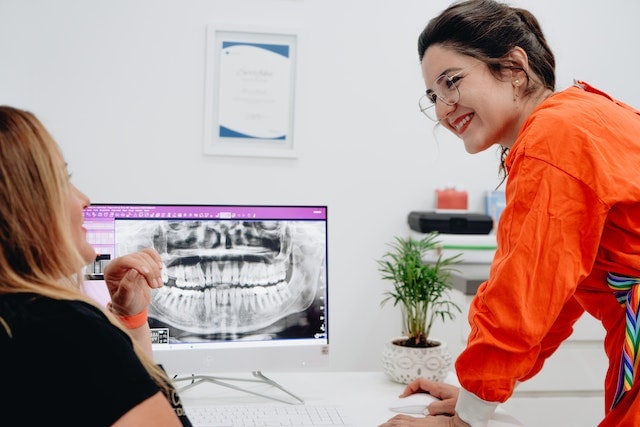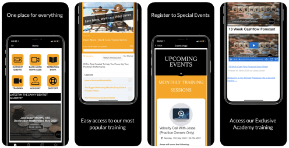There is no one silver bullet when it comes to creating a thriving, seven-figure dental practice. If only…
It would have made my decades of building successful dental practices so much easier!
I’ve built my seven-figure practices from the ground up, bought them, sold them, and through dental coaching helped hundreds of dental practice owners around the country hit their seven-figure success – and beyond!
And when it comes down to it, there are only a handful of things you need to do – you just have to do them consistently and to a high level.
So, what are the activities and principles that lead to a thriving, successful dental practice?
Well, I’m happy to share them with you now…
Build Assets
The ability to build assets is incredibly important to your success in business and practice ownership.
Every headache, frustration, bottleneck, and pain in the backside that you experience in your practice, can be traced back to a deficiency of assets.
Now, when I say assets, I don’t just mean your cash or how many chairs you have – although those are certainly important.
There are several different types of assets, including:
- Physical assets; equipment, your fit out, your plumbing, your walls, your cabinetry, instruments, materials, all that sort of stuff.
- Goodwill assets; your reputation, brand awareness, and patient base, both active and inactive (which are still incredibly valuable because they can be reactivated!)
- Intellectual property assets, which are only becoming more and more important as the dental industry evolves. Intellectual property would include your branding, operational systems, email sequences, communication frameworks, reactivation protocols, sales processes etc.
- Human resources assets, meaning all things team and culture. If you are clear about your employee value proposition, that’s an asset. If you have an onboarding process, that’s an asset. If you’re good at training and you’ve got your training processes documented, that’s an asset. Same with your culture creation telescope, being clear about your values, your vision, the stories, the habits, the behaviours, they’re all assets.
So, when you sit down and think about the last problem you had in your practice, you can see that it was likely to do with a deficiency of assets.
Whether it was the lack of an asset, not training to use an asset properly, mismanagement or misunderstanding around an asset – they’re what sets up the foundations for your practice.
Financial Tracking is Key for Your Dental Practice
You can’t manage what you don’t measure – it’s as simple as that. You need to be on top of your financial tracking and know your numbers inside and out.
If you want to maximise your revenue and profits, build healthy cash flow, minimise losses, and mitigate risk in your practice, then you need a systematic approach to gathering and reviewing your financial data.
But a particularly important metric I want to draw your attention to is your Effective Hourly Rate.
Your Effective Hourly Rate (or EHR for short) is a crucial data point to know if you’re in the process of growing and scaling your practice.
By tracking your EHR, you can determine if you’re moving closer to your goal of earning more and working less, or if you’re off-track.
The formula for calculating your EHR is simple; EHR= Profit/Time.
This measures your ability to generate revenue, manage expenses, and the leverage you can create in your practice.
We recommend calculating your EHR every month so you can tell which direction you’re trending in.
Retention is Better than Recruitment
Being able to retain a patient base is a key skill for any dental practice.
You can spend all the time, money, and energy you like on complex marketing campaigns that attract new patients – but it’s going to do you very little good unless you can retain them.
Retention is something I’m particularly passionate about, to the point that I authored a book on the topic.
It’s far cheaper, easier, and more effective to retain your existing patient than constantly going out and looking for new ones. Plus, loyal patients tend to be better to work with.
The relationship grows so that over time, the patient comes to know you, like you, and trusts you more. Ultimately, this means they’ll come to accept more treatment and get the best care possible through you. And, there’s even the potential for them to refer friends and family to you, or leave reviews.
So, it is in your best interest to be able to retain patients effectively!
Get the Right People in Your Dental Practice
To transition from dentist to business owner, we need to be backed by a team. But with teams comes complexity.
There are different personalities, desires, and preferences that all need to come together toward a singular goal: the success of the dental practice.
Many great teams are self-reliant and self-regulating. However, in the absence of leadership, chaos can descend over the team, limiting their ability to perform well and disrupting their potential.
Building a high-performance team takes time, effort, patience and dedication.
When a practice has a great team, it is well positioned to not only maximise the performance of the business but also to scale up its operations while providing the owner with an improved financial return and greater time flexibility.
So, in a nutshell, these are the key ingredients for a successful dental practice. And I mean success in every sense of the word – profitable, efficient, fulfilling, and providing a great patient experience.
It took me years in the trenches to figure out what works and what doesn’t, and my goal is to share my learnings to make your journey a little easier.
If you’re interested in learning more about how we help other dental practice owners grow their businesses to seven-figure success (and beyond!), you can book a free Practice Growth Call with us below.
I’ll chat with you 1:1 to take a look at where you are now, and where you want to be, and help bridge that gap with as little time and stress as possible!





